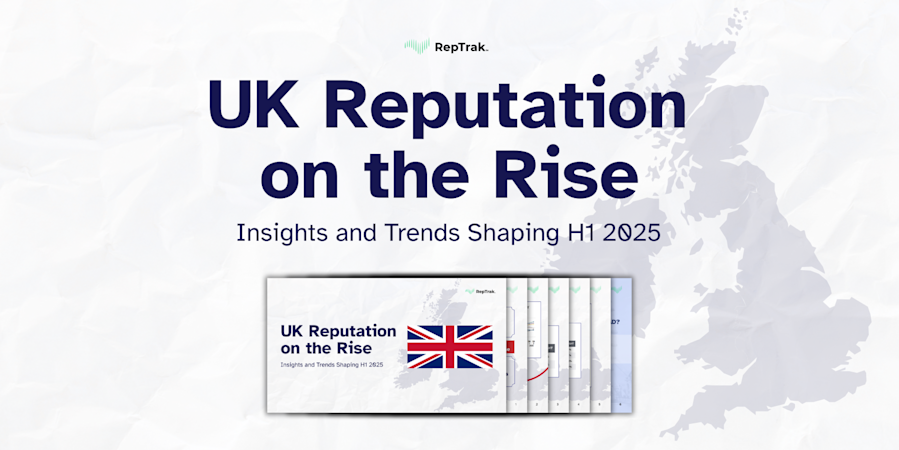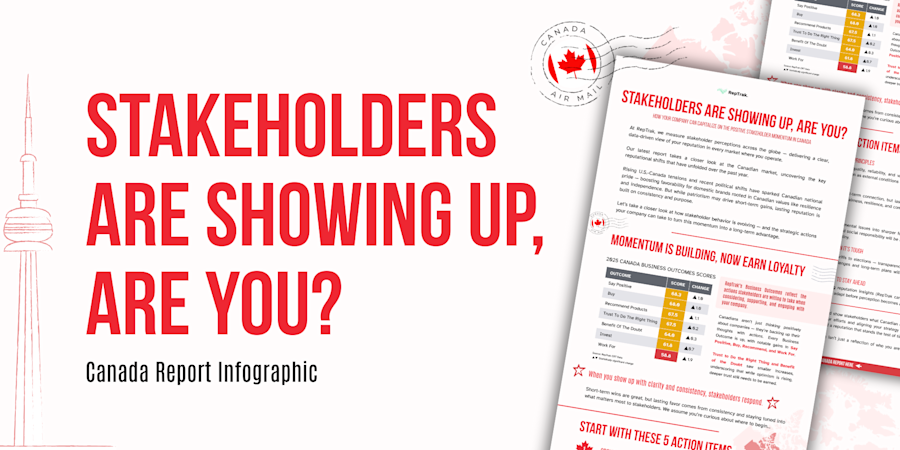How to Create an Effective Corporate Communications Plan, Part 1: Identify Your Stakeholders
Blog Post14 Nov, 2019
This is the first of three posts to help guide you as you plan and budget for an effective corporate communication strategy. In this post, we’ll explore the first step: identifying the people who matter most to your brand.
Did you know that only 34% of corporate communications executives are managing the reputation of their company proactively?
Given the growing importance of a company’s reputation, that’s a pretty small number.
A company’s products and services were once considered the only major drivers of business growth. Today, those intangibles like purpose, governance, corporate responsibility, in other words, reputation, plays a key (perhaps primary) role in increasing the bottom line. In fact, the top 10 most reputable companies, according to The RepTrak Company, have significantly outperformed the S&P 500 since 2006.
Your reputation is created through the emotional bond between your company and your stakeholders. Without that bond, the life of your company will most likely be a short one.
Think about the brand loyalty companies like LEGO and Rolex command. Yes, they both produce quality products, which gives them a reputation lift. But their excellent reputations are also fueled by how employees, customers, investors, and other stakeholders perceive them as a company.
Defining Your Company’s Key Stakeholders
So, who are the people who matter most to your brand? They include a group far bigger than your customers alone. They are the stakeholders that support, buy from, invest in, work for, and grant your organization the license to operate when and where it wants.
There are five main groups of stakeholders:
Customers: The people who buy from your company
Investors: The people who support your business with financial resources
Employees: Those who work or want to work for your company (Keep in mind that 66% of employees want to work for companies with an excellent reputation)
Regulators: Those who oversee your industry and grant you a license to operate in the communities and markets that you wish to
Market Influencers: A newer phenomenon and critical audience, market influencers hold sway over others’ opinions of your company. They can be especially impactful to those who are undecided about whether or not to support your business
Your goal with these stakeholders is to raise the reputation of your company through these seven critical business areas:
Products & Services: If a company’s products and services don’t meet stakeholder expectations, it hurts their reputation.
Innovation: Forward-thinking and creatively inspired companies have a better reputation.
Workplace: Workplace culture has never been more important. With unemployment at an 18-year low of 3.8%, attracting the best people for the job in a competitive market is tough
Governance: This is a measure of your company’s ethical behavior, transparency, and fairness.
Citizenship: A company that takes an active stand in making the world a better place, usually through environmental and social actions, has a stronger reputation with the general public.
Leadership: Leadership primarily measures the effectiveness of a company’s management strategy.
Performance: Performance and profitability are key indicators of reputation success.
To improve on your company’s reputation, your corporate communication strategy should highlight your successes within each of these drivers. But where do you start? First, prioritize your stakeholders.
Which stakeholder group matters most?
All stakeholders are important, however, time and resources make it hard to reach all stakeholders all of the time. Of course, communications experts understand that a strong strategy means engaging the right audience in the right place at the right time. Leaders must rely on data to determine which stakeholder group matters most and how effective (or ineffective) the company currently is at reaching them.
Do you have a new product on the market? Your customers are probably the most important stakeholders right now. Are you going through a round of fundraising so you can expand your team? Current and potential investors are most likely your first priority, followed by current and prospective employees.
Then, determine how well you’re engaging with those stakeholders currently. Once you’ve taken an honest look at how your company engages with your most important stakeholders, you can put together a plan to reach them more effectively.
For a table to help you rate your stakeholders, check out The RepTrak Company’s Corporate Communications Planning & Budgeting Template.
Where are your target stakeholders?
It may not be enough to identify a single target market as your most important. If you’re a regional, national, or global brand, you’ll have to pay attention to different stakeholders in different target markets.
You may need to win the approval of business regulators in the EU, while market influencers who can spread the word about your brand are your focus in Southeast Asia.
Knowing who to target where means you can allocate time and money in the right places at the right time.
Once you’ve identified who your important stakeholders are in your corporate communications plan and how well you’re currently engaging with them, the next step is to identify what you’re going to communicate.
That’s where your brand purpose comes in. In the next blog post, we’ll help you define a brand purpose and come up with a strategy to align all aspects of your business with that purpose.
Download this guide Corporate Communications Planning & Budgeting Guide to learn more.
Amanda McCormick Senior Marketing Coordinator The RepTrak Company [email protected]






